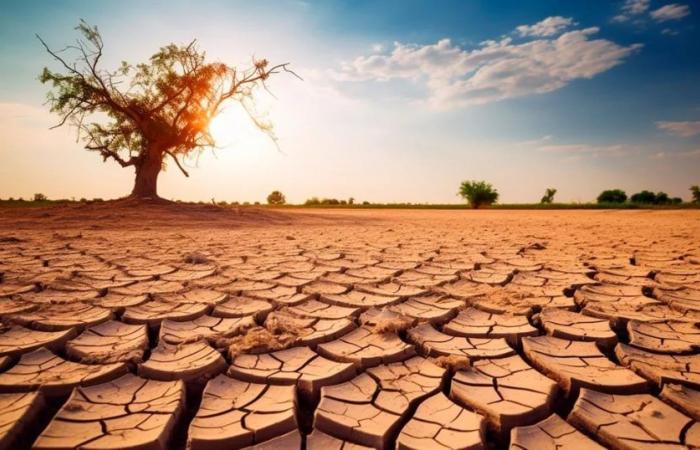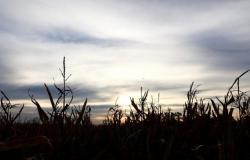2023 was not only the hottest year recorded so far, also set a record in terms of droughts. The reduction in precipitation, higher than average temperatures and recurrent heat waves caused these events to be repeated in several countries in the region.
On June 17th, the World Day against Desertification and Drought, but the situation on the planet is so alarming that the United Nations (UN) has dedicated this year to the issue. And the Latin American region is not immune to the problem.
According to United Nations Convention to Combat Desertificationthe number and duration of drought periods have increased 29% since 2000. The situation could affect more than three quarters of the world’s population by 2050 if the trend does not change.
According to the report of the World Meteorological Organization (WMO)State of the climate in Latin America and the Caribbean 2023, almost all of Mexico, central Chile, the Altiplano, the western and eastern part of the Amazon, the central and southern Andes, as well as a good part of Central America, the central area of Venezuela and the Guyanas were affected by severe droughts. Other countries such as Cuba, the Dominican Republic and Haiti suffered disaster events. water scarcity more moderate, but, in general, most countries have suffered the effects of the dry season.
Juan Rivera He is a doctor in Atmospheric Sciences and a researcher at the CONICET and explains the situation: “The occurrence of droughts affected the central region of the country mainly in the first half of the year 2023, a period in which the influence of the phenomenon of The girl which lasted three years and strongly affected the region of the Cuenca del Plata, generating very pronounced downturns in its main rivers. The agriculture was strongly affected by the drought in the 2022/23 campaign, with losses close to 50% on main crops of the Pampean region. When the phenomenon of The boy During the second half of the year, rainfall recovered and the area affected by droughts at the country level was reduced. In the Cuyo region, snow accumulation in the Andes Mountains reached normal levels after 12 years of deficit.”
But what is the relationship between drought and desertification? “Drought, soil degradation and desertification are phenomena that they usually coexist, particularly in Argentina, where two thirds of the surface correspond to arid or semi-arid lands. At the National Observatory of Land Degradation and Desertification we seek to quantify these processes and their interactions, in order to generate tools for mitigation. It is an important work taking into account the extension of the national territory and the different realities that exist in relation to the climate, land uses and the interdisciplinary processes that allow the development of management practices. sustainable land management”, adds the researcher.
In Argentina, dry lands occupy the 70% of the national territory and are affected by unsustainable livestock, forestry or agricultural management; deforestation and inappropriate use of water resources. The factors that lead to loss of biodiversity and ecosystem services They can be water and wind erosion, the decrease in vegetation cover and the productivity of natural vegetation and the alteration of the hydrological cycle.
There is also a relationship with increase in temperatures: “Higher temperatures contribute to a greater impact of droughts. We analyze this specifically considering various episodes of heat waves in the 2022/23 season, which contributed to drastically reducing soil moisture, generating episodes of rapidly developing droughts.” “We also know that in the mountain region of Cuyo and Patagonia there is a trend towards a decrease in precipitation that is partially attributable to the human activitieswhich generates increasingly frequent episodes of water scarcity,” says Rivera.
The WMO report details: “The driest year in Mexico for which data is available (records began in 1941) was 2023. By the end of September, the drought was already affecting the 76% of the country, being particularly extreme in much of the central and northern areas. Rainfall in 2023 was below average in almost all of Central America. “The low water level has restricted traffic in the Panama Canal since August.”
It also describes that during the first half of the year, the effects of La Niña were still visible; The chain effects of the lack of water in the La Plata basin mainly affected Uruguay, northern Argentina and southern Brazil. “Between January and August, rainfall was between 20% and 50% below average across much of northern and central Argentina, with some regions experiencing their fourth consecutive year of well-below-average rainfall. In Argentina there were numerous crop losseswith wheat production during the 2022/2023 biennium more than 30% lower than the five-year average,” the report describes.
Up to 40% of the world’s land is already degradedwhich directly affects half of the world’s population, and it is estimated that 3.2 billion people all over the world suffer the negative effects of desertification. For 2050more than three-quarters of the world’s population is expected to be affected by droughts.
On June 5, when the Environmental daythe international community sought to support the acceleration of progress on global commitments, which include the 30% protection of land and sea for nature and 30% restoration of the planet’s degraded ecosystems.
Although countries have promised to restore one billion hectares of land by 2030, current trends suggest that it would be necessary to restore 1,500 million hectares to meet land degradation neutrality goals within six years.






